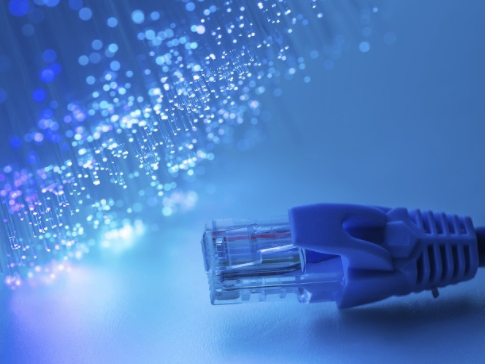Oufu Optical Fiber Cable Co.,Ltd
Address: Shenyang, Liaoning, China
Contact person: Manager Zhang
Phone: 400-964-1314
Mobile phone: +86 13904053308
【whatsapp && wechat】
2024-07-29 1490
Fiber Optic to Ethernet Conversion: A Comprehensive Guide for Meeting Diverse Network Needs

Understanding the Need for Conversionwww.adsscable.cn
Fiber optic networks are renowned for their high-speed data transmission, long-distance capabilities, and resistance to electromagnetic interference. They are the backbone of modern telecommunications, supporting critical applications such as internet backbones, long-haul data transfer, and high-bandwidth video streaming. However, as businesses expand their digital footprints, they often find themselves needing to integrate these high-performance fiber optic networks with local area networks (LANs) that rely on Ethernet technology.
Ethernet, on the other hand, is the ubiquitous standard for connecting devices within a closed environment. Its simplicity, flexibility, and widespread adoption make it an ideal choice for LANs. The challenge lies in bridging the gap between these two technologies, ensuring that data can flow seamlessly between fiber optic and Ethernet networks.
Key Considerations for Fiber Optic to Ethernet Conversion
Compatibility: The first step in the conversion process is to ensure that the hardware and software components used are compatible with both fiber optic and Ethernet standards. This includes selecting the right media converters, switches, and cables that can support the desired speed and distance requirements.
Speed and Bandwidth: Depending on the application, the conversion process should prioritize either speed or bandwidth. For example, high-bandwidth applications like video streaming may require Gigabit Ethernet converters, while lower-speed applications can utilize Fast Ethernet converters.
Distance: Fiber optic cables can transmit data over long distances without significant signal degradation. However, when converting to Ethernet, the maximum distance between devices may be limited by the Ethernet standard and the quality of the copper cables used.
Cost: The cost of conversion is another important consideration. While fiber optic infrastructure can be expensive to install, converting its signals to Ethernet can help leverage existing infrastructure and reduce the need for additional hardware.
Steps for Fiber Optic to Ethernet Conversion
Assessment: Begin by assessing your current network infrastructure and identifying the specific requirements for the conversion. This includes determining the speed, bandwidth, and distance requirements, as well as any compatibility issues that may arise.
www.adsscable.cn
Selection of Hardware: Choose the appropriate media converters, switches, and cables that can support your conversion requirements. Ensure that they are compatible with both fiber optic and Ethernet standards.
Installation and Configuration: Install the hardware components and configure them according to your network requirements. This may involve setting up the media converters, connecting the cables, and configuring the network settings.
Testing and Validation: Once the conversion is complete, thoroughly test the network to ensure that it is functioning as expected. Validate the speed, bandwidth, and distance capabilities, and troubleshoot any issues that may arise.
Optimization and Maintenance: Continuously monitor and optimize the network to ensure that it meets your evolving requirements. Regularly update the firmware and software of your hardware components, and perform routine maintenance to prevent downtime and ensure optimal performance.
Benefits of Fiber Optic to Ethernet Conversion
Increased Flexibility: By converting fiber optic signals to Ethernet, businesses can easily integrate their high-performance fiber optic networks with local area networks, creating a more flexible and versatile network infrastructure.
Cost-Effectiveness: Leveraging existing fiber optic infrastructure and minimizing the need for additional hardware can help reduce the overall cost of the conversion process.
Scalability: As businesses grow and their network requirements evolve, the Fiber Optic to Ethernet conversion solution can be easily scaled to accommodate additional devices and applications.
www.adsscable.cn
Improved Performance: By ensuring seamless integration between fiber optic and Ethernet networks, businesses can enjoy the benefits of both technologies, including high-speed data transmission and increased reliability.
Conclusion
Fiber Optic to Ethernet conversion is a critical step in meeting the diverse network needs of modern businesses. By understanding the key considerations, following the steps outlined in this guide, and leveraging the benefits of the conversion process, businesses can create a more flexible, cost-effective, and high-performing network infrastructure that supports their evolving requirements.